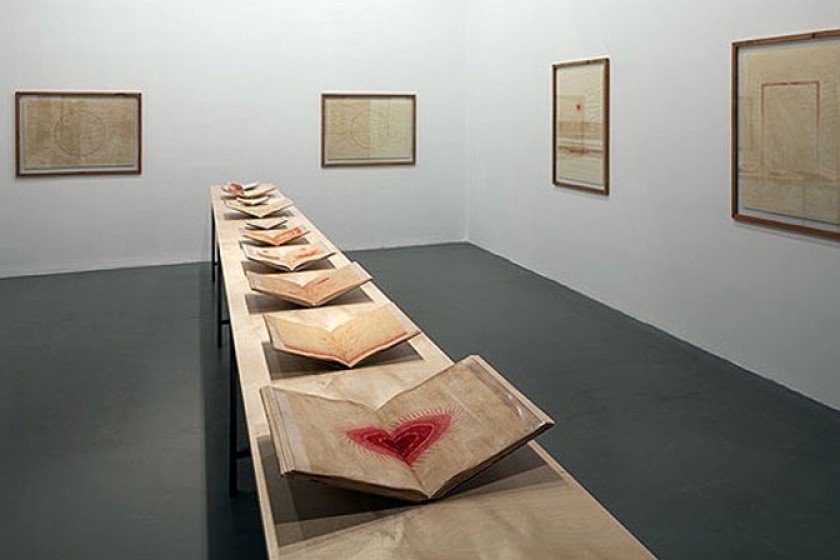
‘Vortan Karmir’ in Doha: Çavuşoğlu’s “Red/Red (2015)” Work Travels to Arab Museum of Modern Art
Aslı Çavuşoğlu’s Red/Red (2015) work will be shown at the Arab Museum of Modern Art (Mathaf) in Doha, Qatar, from May 22-September 11.
This is the first presentation of Red/Red at Mathaf following its production for the 14th Istanbul Biennial, SALTWATER: A Theory of Thought Forms, (2015), with support from Qatar Museums.
Aslı Çavuşoğlu’s Red / Red (2015) explores the physicality of a colour to tell a story of coexistence and communality. Delicate drawings are made on worn papers and handmade notebooks in two red inks: Armenian red, extracted from the endangered Armenian cochineal insect, and Turkish red, now used in the national flag. As the patterns modernise from floral to geometric shapes, the resilience of each pigment as it transforms over time is also reflected. In the work, the Turkish red holds its colour while the Armenian fades, narrating the changing physical and allegorical links to national culture, identity, and memory.
Çavuşoğlu studied Armenian cochineal, from its earliest extraction in the 7th century BC to its use in manuscripts, or “miniature paintings”, to document Armenian culture and life. The pigment comes from a carminic acid found in the “Ararat” or Armenian cochineal insect living in the roots of the Aeluropus littoralis plant. This plant is indigenous to the Aras (Araks) River valley, which forms the natural border between Turkey and Armenia. On the Turkish side of the river, knowledge of how to produce Armenian cochineal red has been lost since 1915, while on the Armenian side the plant and insect are threatened by extinction due to 20th century industrialisation.
The work explores this pigment’s disappearance, speaking to the political and ecological histories of this region. Red / Red advocates for the protection of the delicate social and organic systems of the Aras valley – human, plant, and animal life – to support a communally protected ecosystem and shared knowledge of production that will preserve the recording of its collective past, present and future existence.
Aslı Çavuşoğlu was born in Istanbul in 1982. Her research-based practice explores the production and interpretation of cultural and ecological archaeologies and social histories. Working in video, drawing, and installation, Çavuşoğlu explores the conditions and histories of artistic and cultural production, and traditions of display.
Recent solo shows include The Stones Talk, ARTER, Istanbul (2013) and Murder in Three Acts, Delfina Foundation, London (2013). Recent group shows include the14th Istanbul Biennial, SALTWATER: A Theory of Thought Forms, (2015); The Crime Was Almost Perfect, Witte de With Center for Contemporary Art, Rotterdam (2014); and Signs Taken in Wonder, MAK Museum, Vienna (2013).
Çavuşoğlu lives and works in Istanbul.
Top Photo: Red/Red, 2015, Armenian and Turkish red on worn-out papers and worn-out handmade notebooks / Sahir Ugur Eren.
 Videos
Videos Photos
Photos




Write a comment